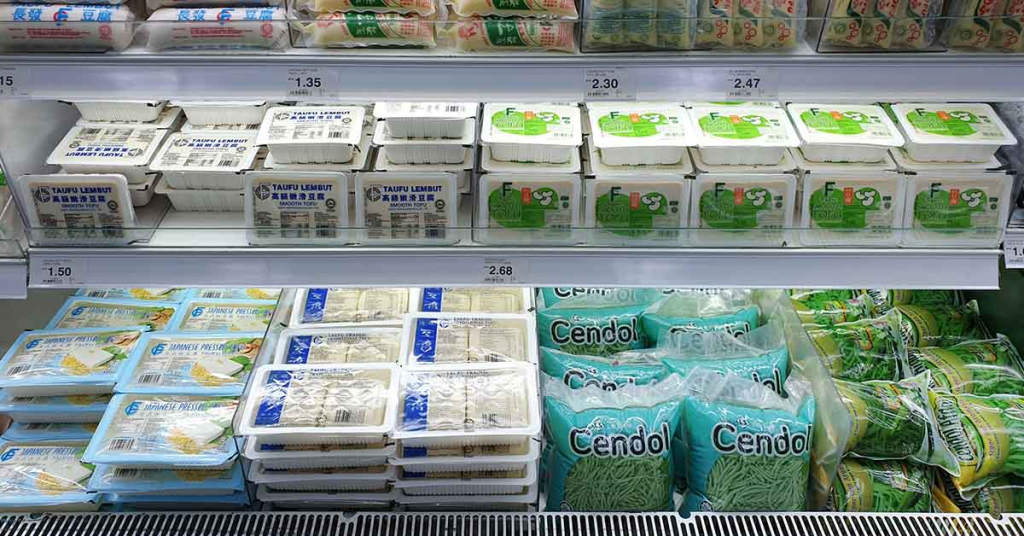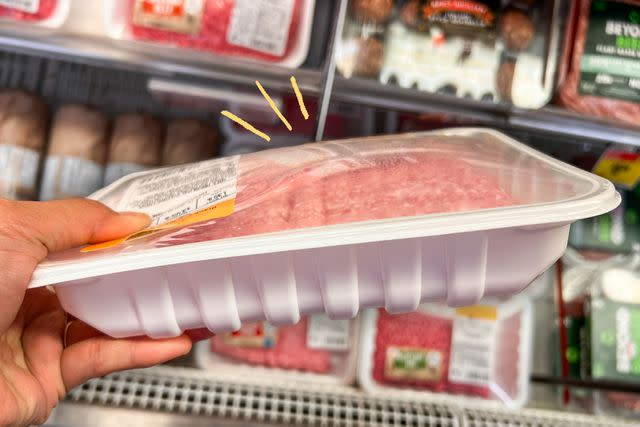Have you ever grabbed a food package and noticed it was puffed up like a balloon? It’s enough to make anyone hesitate before eating what’s inside. While a bit of air in food packaging is normal, excessive swelling often signals an issue. Let’s break down why packaging bloats, when to be concerned, and how to handle it safely.
What Causes Food Packaging to Swell?

Swollen food packaging happens when gases build up inside the container, making it expand unnaturally. While some air in packaging is intentional, as with chips to prevent crushing, excessive bloating usually indicates a problem.
The most common cause is gas production from microorganisms inside the package. When bacteria or other microbes grow on the food, they release gases like carbon dioxide. These gases accumulate and create that ballooned appearance, which can be a red flag for spoilage.
Bloating Caused by Spoilage
When bacteria start breaking down food, they don’t just change its taste or smell—they can also produce gases. This is a hallmark sign of spoilage. Swollen packaging may indicate the presence of harmful pathogens, such as:
- Clostridium botulinum: A potentially life-threatening bacteria that produces toxins.
- Listeria monocytogenes: Known for causing severe illness, particularly in pregnant women, young children, and the elderly.
According to food safety experts, bloating in perishable items like meat, dairy, or prepared meals often means the food is no longer safe to consume.
@drzieglermonster Replying to @Kevin it might be intentional or it might be dangerous #meat #foodsafety #food #butrition #fitness #zmf ♬ Adore – Instrumental – GC
Not All Swelling Indicates Danger
It’s worth noting that some swelling in packaging is intentional and safe. Many food manufacturers use Modified Atmosphere Packaging (MAP) to preserve freshness. In this process, inert gases like nitrogen or carbon dioxide are used to replace oxygen in the packaging, slowing spoilage and extending shelf life.
You may notice slight puffiness in products like:
- Packaged meats
- Salad mixes
- Soft cheeses
This kind of swelling is normal and doesn’t pose a risk, as long as the packaging remains intact and the product is within its expiration date.
Foods Most Susceptible to Packaging Bloat
Certain foods are more prone to bloating due to their high moisture and nutrient content, which create an ideal environment for bacterial growth. Here are the top culprits:
- Raw Meats and Poultry: Their high protein and moisture content make them particularly vulnerable.
- Seafood: Spoils quickly and is often stored in airtight packaging, increasing the chance of gas buildup.
- Dairy Products: Cheeses and yogurts can swell due to fermentation or bacterial activity.
- Prepackaged Meals: Items like ready-to-eat salads or refrigerated dinners are at higher risk because of their short shelf life.
In contrast, low-moisture foods such as crackers or dried fruits are much less likely to experience swelling.
What to Do When You Encounter Swollen Packaging

Finding a bloated food package can be alarming. Here’s how to handle it:
Avoid Buying Swollen Packages
If you notice a package is swollen before purchase, it’s best to leave it on the shelf—even if the expiration date hasn’t passed. The bloating could indicate spoilage or a breach in the packaging process.
Discard Questionable Items
If you’ve already brought home swollen packaging, it’s safer to discard the item. Food safety experts caution against consuming any food from bloated packaging, as harmful bacteria may be present.
Don’t Depend on Smell Alone
While foul odors can be a sign of spoilage, some dangerous bacteria don’t produce a strong smell. Just because the food doesn’t stink doesn’t mean it’s safe.
Storage Tips to Prevent Swelling
Preventing packaging from swelling often comes down to proper storage practices. Here are some tips to keep your food fresh and safe:
Refrigerate Perishables Promptly
Store meat, dairy, and other perishable items in the fridge immediately after purchase. Maintaining a temperature below 40°F (4°C) can significantly slow bacterial growth.
Avoid Heat and Sunlight
Heat accelerates spoilage, so keep packaged foods in a cool, dry environment. Avoid leaving groceries in a hot car or direct sunlight.
Pay Attention to Expiration Dates
Use foods before their “best by” or “use by” dates to minimize the risk of spoilage. These dates are reliable indicators of freshness.
Freeze for Longevity
If you don’t plan to use certain perishable items soon, freeze them to extend their shelf life.
The Science Behind Gas Production
Microbial activity is the most common cause of swelling. Bacteria metabolize the food inside the package, producing byproducts like carbon dioxide or hydrogen gas. The type and amount of gas depend on the specific microbes present and the food’s composition.
While this process can occur naturally, improper handling or storage—like leaving food at room temperature for too long—can accelerate spoilage, leading to rapid gas buildup.
The Dangers of Ignoring Swollen Packaging

Eating food from bloated packaging can lead to severe foodborne illnesses. Symptoms include:
- Nausea and vomiting
- Diarrhea
- Stomach cramps
- Fever (in severe cases)
Vulnerable individuals, such as pregnant women, children, and older adults, are especially at risk. It’s never worth the gamble—if the packaging looks off, discard it.
Conclusion: Stay Safe, Not Sorry
Bloated food packaging is often a warning sign that something’s gone wrong. While some swelling, like that from MAP, is harmless, unexpected puffiness usually indicates spoilage or bacterial activity. When in doubt, it’s best to err on the side of caution.
By paying attention to storage practices, avoiding swollen packages, and recognizing the signs of spoilage, you can protect yourself and your family from potential health risks. Remember, it’s always better to toss questionable food than risk your well-being.


